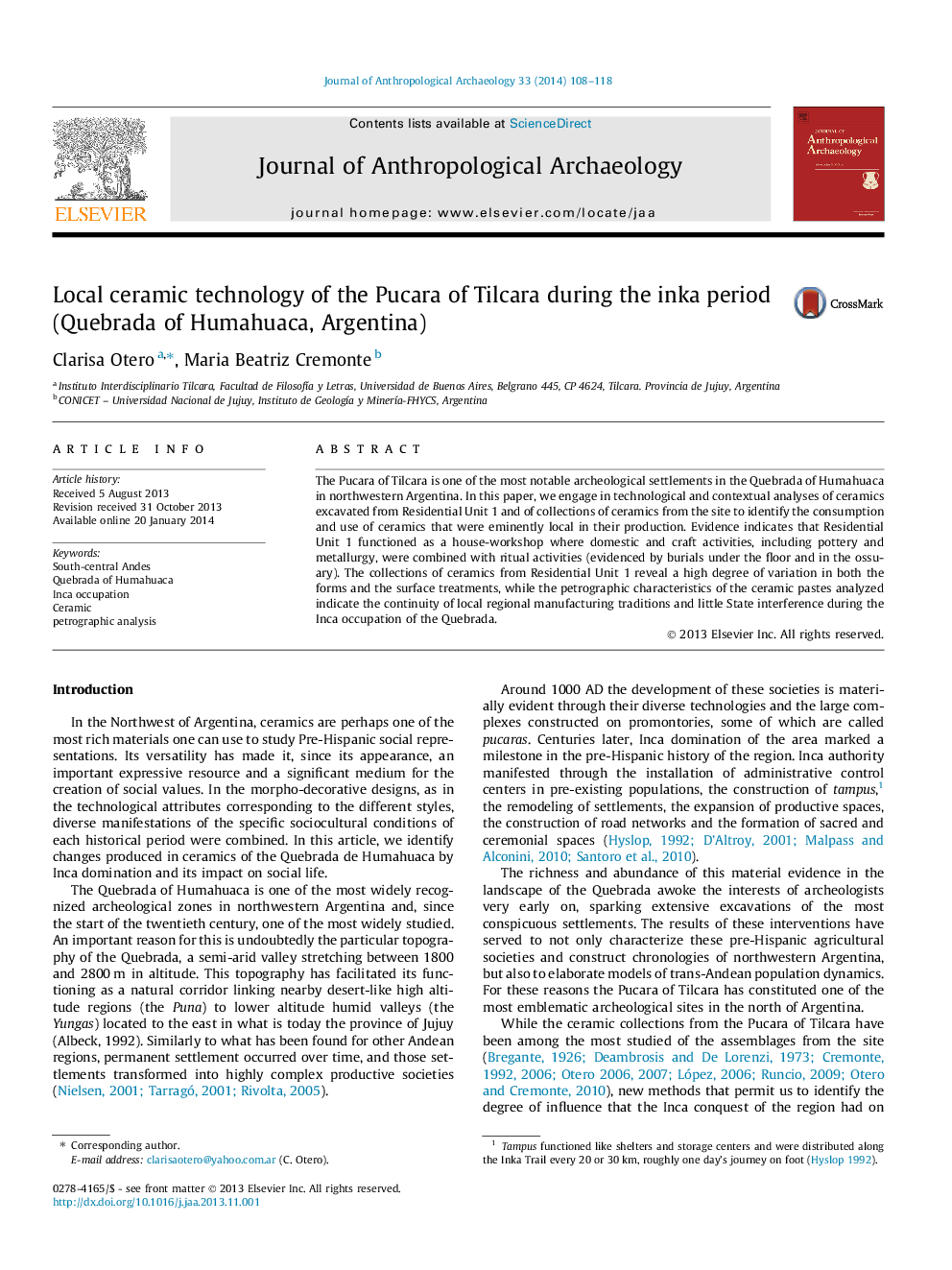| Article ID | Journal | Published Year | Pages | File Type |
|---|---|---|---|---|
| 7440618 | Journal of Anthropological Archaeology | 2014 | 11 Pages |
Abstract
The Pucara of Tilcara is one of the most notable archeological settlements in the Quebrada of Humahuaca in northwestern Argentina. In this paper, we engage in technological and contextual analyses of ceramics excavated from Residential Unit 1 and of collections of ceramics from the site to identify the consumption and use of ceramics that were eminently local in their production. Evidence indicates that Residential Unit 1 functioned as a house-workshop where domestic and craft activities, including pottery and metallurgy, were combined with ritual activities (evidenced by burials under the floor and in the ossuary). The collections of ceramics from Residential Unit 1 reveal a high degree of variation in both the forms and the surface treatments, while the petrographic characteristics of the ceramic pastes analyzed indicate the continuity of local regional manufacturing traditions and little State interference during the Inca occupation of the Quebrada.
Related Topics
Social Sciences and Humanities
Arts and Humanities
History
Authors
Clarisa Otero, Maria Beatriz Cremonte,
